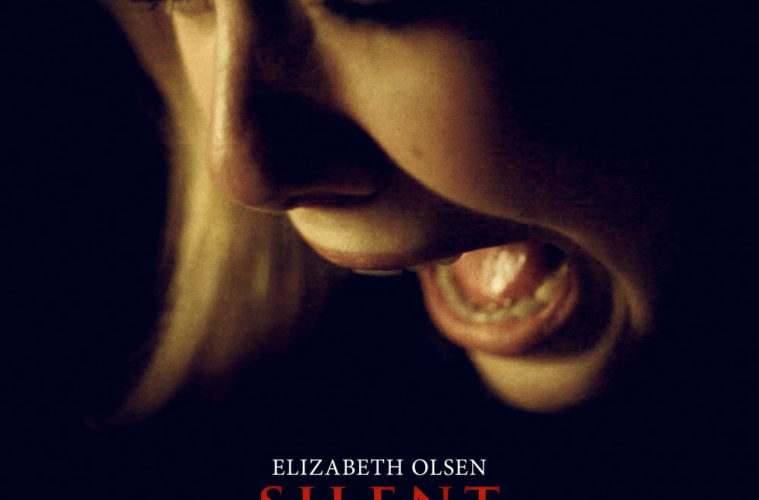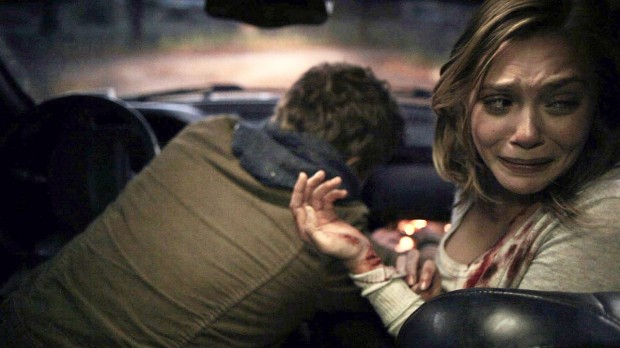Silent House is the kind of movie that will likely divide views along a pretty solid line. However, whereas many films would divide people along the lines of “love it” or “hate it,” this film will most likely break people down into “admire it” or “despise it.” This distinction will probably form along lines regarding both the narrative of the film and its primary technical gimmick.
Elizabeth Olsen plays a young woman named Sarah who has joined her father and uncle at their lake-side house to clean up and prepare the property for sale. As night falls and her brother leaves, Sarah begins to hear ominous noises emanating from the upper floors. She and her father go to inspect the sound but find only empty boxes, boxes that Sarah begins to fill with her childhood belongings. However, before long the noises are back, and her father is nowhere to be found.
From here the film turns into a claustrophobic and atmospheric nightmare. Directors Chris Kentis and Laura Lau (Open Water) use every trick in the horror movie book to wring the audience into a state of sustained unease and tension. The house is old, decrepit, the electricity gone and the windows all boarded up. Padlocks adorn every door to keep squatters out. Sarah’s escape should be easy, but at every turn there is an immovable obstacle barring her inside. The house is a symphony of sound – shaking, moaning pipes; creaking doors; echoing footsteps. All of it coalesces into a terrible and heavy sense of dread.
Of course this atmosphere is helped along by the technical aspect of the film – it is presented as though it were filmed in one single take. As much as it could have served simply as a marketing hook, this camera trick actually does a lot towards helping to convey a sense of place and of helplessness. The lack of a reprieve, the unrelenting nature of the camera and the way it follows with implacable persistance makes the entire endeavor unbearable at times. Later, when the mood shifts and apprehension and terror are replaced by enigmatic paranoia, the camera lends a surprising amount of intrigue to the story.
However, all of these platitudes fall to the wayside when the plot begins to reveal itself. While impossible to explain fully without delving into spoilers, it can be said that the place the film winds up does a disservice to the story that came before, not so much because of what it says, but the way it says it. Even in retrospect the film manages to be elevated by the ending; but only the first 80 minutes, with the final five falling to bittersweet pieces.
Some people may see the end of the film as a betrayal of the premise, of the gimmick. Some people might find themselves put off by the manner in which the plot resolves itself to heartily that they cannot hold on to any joy or admiration following the reveal. If you’re in the mood for a film of technical merit with an intriguing idea executed and presented in novel fashion, however, I say give Silent House a shot.
Silent House is now in wide release.



